What Is Digital Marketing - And Why Should I Care?


What is Digital Marketing?
Digital marketing is an essential form of educating the world about your products or services. It’s also one of the most misunderstood forms of marketing. Let’s take a look at what it is and why it should matter to your organization.
Why Digital Marketing Is Important
Digital marketing incorporates all methods of reaching your audience using the internet. Businesses who use it well reach customers through numerous channels including social media, search engines, and their websites.
Nearly all of your customers have a smartphone in hand. Utilize that as a tool to reach them as well because your customer expects you to be connected to them and to make connections easy.
Salesforce released a study called “State of the Connected Customer” that sheds light on why digital marketing is so valuable today. They found that 69% of buyers expect an Amazon-like experience when buying, yet only 27% of the businesses’ buying experiences actually meet their expectations.
The report also demonstrates the value in digital marketing. It found that 67% of buyers prefer to purchase through digital channels and 68% of buyers want companies to have cutting-edge digital experiences to keep their business.
Here’s another example of the current market. HubSpot reports that just 29% of people want to talk to a salesperson to learn about a product before making a purchase. Yet, 62% of customers use a search engine to gather insight before making that purchase.
Are you putting all of your efforts into the 29% of customers that will turn to that sales professional?
If so, it’s costing you.
Sellers no longer control the sales process. Rather, the buyer controls the entire process, from their willingness to research a product to the engagement they show within digital channels. And their research is done through digital channels, making your digital presence even more important than ever.
What Is Digital Marketing?
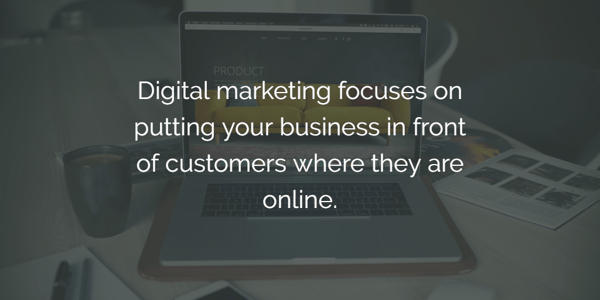
Digital marketing focuses on putting your business in front of customers where they are online. You know most adults have access to the internet through their smartphone throughout the day. Digital marketing is the method of advertising your business so it’s always accessible to these would-be customers.
Any type of marketing a company does online falls under digital marketing. Use of new media or digital technology to achieve your business objectives is a form of digital marketing.
Everything from mobile technology, computers, social media, and even digital billboards fall under this type of marketing. These tools, including digital marketing software, help marketers to create, distribute, and then track their marketing efforts on all digital platforms used.
There are Two Key Distinguishing Forms of Digital Marketing:
Outbound Digital Marketing
In outbound digital marketing, the brand advertiser is pushing out a message to a target audience, usually one with a clearly-defined target buyer and with a very specific objective.
The use of a visual display banner, pay-per-click ads, or videos that are shown numerous times can help people to recognize the brand, for example, in the “drive product recall” method.
With outbound marketing, you have a defined message and audience. Then you push that message out to your audience using digital means.
The goal is to get the attention of your audience.
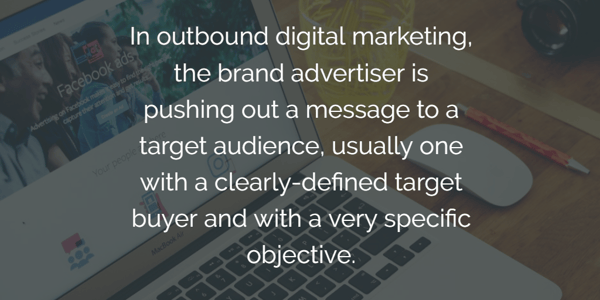
Inbound Digital Marketing
With inbound marketing, the brand advertiser is pulling in the audience to their content, service, or the brand in general.
You want to attract people to your product or service. This encourages those individuals to then engage with your company. Companies may use blogs, email subscriptions, word of mouth advertising, and search engines to bring people in.
Online reviews are also powerful for inbound marketing.
Once individuals reach your brand, you want to turn them into customers. Being creative when drawing people into your brand is critical because it is your chance to attract an audience who perceives your services or content as valuable to them.
By providing the information that your potential customers are looking for as they do their research helps create an atmosphere that makes them want to work with you.
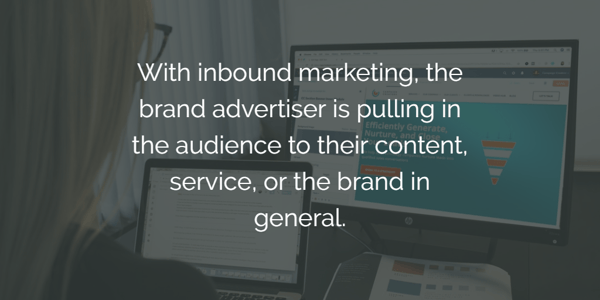
Digital Marketing Channels
Digital marketing channels are the avenues with which you’ll communicate with your audience and the tools you’ll use to reach them. Your digital channels include anything you use online to reach your customers such as:
- Social media websites including Facebook, Twitter, LinkedIn, YouTube, Instagram, Pinterest, and Snapchat
- Search engine optimization
- Websites
- Content marketing channels such as infographics and eBooks
- Pay-per-click, or PPC, advertising using tools such as Google Ads as well as paid ads on Facebook, Promoted Tweets on Twitter, and Sponsored Messages on LinkedIn
- Marketing automation which is done through email newsletters, social media post scheduling, and campaign tracking and reporting
- Affiliate marketing such as hosting video ads through the YouTube Partner Program or posting affiliate links on your accounts
The Buyer's Journey in Digital Marketing
How will your customers learn about your product or service and interact with you?
Creating a buyer's journey is done based on research and it’s rooted in your inbound methodology.
Inbound marketing is how you attract your highly-qualified audience by providing them with the tools and content they need to make decisions.
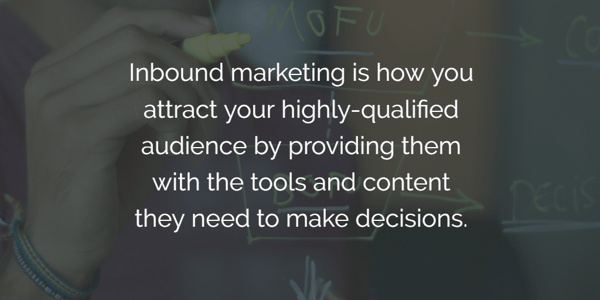
The Different Stages of the Buyers Journey
Here’s a breakdown of how the buyer’s journey is likely to occur and what steps you should implement at each stage to achieve success.
Awareness Stage:
- Consumer/Buyer: The consumers become aware of a problem they want to solve in their life and perceive your product as a potential solution.
- Business Supplier: Focus on creating visibility and recognition.
Interest Stage:
- Consumer/Buyer: The moment when consumers are looking for options that will help solve their problem. They have a selection of ideas in mind but need more information and experience to make a decision.
- Business Supplier: Increase emotional engagement through reviews, blog articles, social media, and ad product websites.
Consideration Stage:
- Consumer/Buyer: The moment when consumers know about your brand and think it might be a good fit for their needs or what they are trying to achieve. Your company is one of their options.
- Business Supplier: Bring your company to the forefront of their choice by inbound strategies through search and social media.
Conversion Stage:
- Consumer/Buyer: The moment when consumers are ready to buy your product or take action on your website. They have done their research and decided on the best product for their solution.
- Business Supplier: Create a point of contact to drive conversions to a sale. Typically achieved with targeting and re-targeting, promotional offers, and creating a sense of urgency.
Retention Stage:
- Consumer/Buyer: Key stage for ensuring reoccurring revenue and creating a group of brand advocates.
- Business Supplier: Critical to providing value and a real relationship. Create a desire for your customer to continue to come back to your product to keep them satisfied.
Aligning the Buyer's Journey with Digital Marketing Channels
The key is to bring together the proper channel with the stages your potential buyers are in right now. Here are a few key breakdowns to consider.
Awareness and Interest Stages
In these stages, customers are slowly becoming aware of their problem and looking for solutions. It’s essential to provide them with the answer to their questions. Here, your decisions are driven by your content’s relationship with the question or need the buyers have.
Your content must be engaging, interesting, and designed to provide them value. Ultimately, you need to provide the solution to their problem.
How can you do this? By doing the following:
Content
Content works to grab the customers’ attention and then encourages them to learn more or to research what you have to offer to them. It’s critical to get your content right. It’s the biggest priority you have within your inbound strategy and will be the most important component of every effort and campaign you run.
Display and Video Advertising
Another component in these stages should be video advertising. These should be based on your developed outbound strategy or the way you’ll push your message out to your potential audience.
The goal here is to build awareness and consideration for your brand. To do this, you’ll need to use audiovisuals and banners – any type of visual format – across the channels where your likely audience is across the web.
Social Media Marketing
In these initial stages, social media is a very important component as it allows you to begin to build a relationship with your audience. The goal is to create a connection – make them want to learn more about you and your product or service.
Social media also allows your brand to remain in the back of their mind. To do this, you’ll need to be active with social media outreach.
Success comes from not just using social media but also making it easy for your audience to reach you or to ask a question. It also should give them an avenue to provide feedback to you.
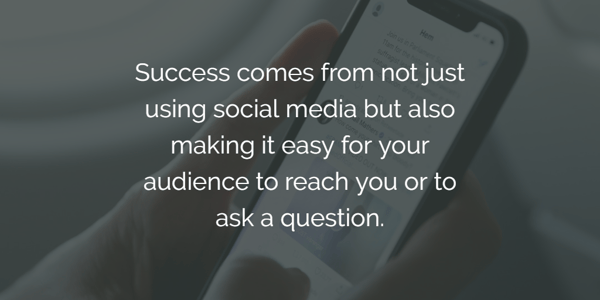
Consideration and Conversion Stages
In these stages, your potential customers are more zeroed in on your product and brand. You want your potential customers to begin to associate their problem’s solution with your brand.
You’ll need to build a strong association with your potential customers to encourage them to keep learning and engaging with your company.
To do that, you’ll need to focus on the following:
Search Engine Optimization
It’s important to recognize search engine optimization (SEO) as more than just a website-building component. It should be built into every piece of content and campaign you launch.
SEO is best for discovery and researching on search engines. Your goal is to ensure your potential customers can find you when they search for a solution to their problem.
Paid Search
Paid search puts your brand in front of your potential customers sooner. While it costs a bit of money, it is also one of the more valuable tools you have when it comes to conversions.
This is because paid search will position your ads in front of those people looking for what you can offer, which in turn leads to better conversions and more sales.
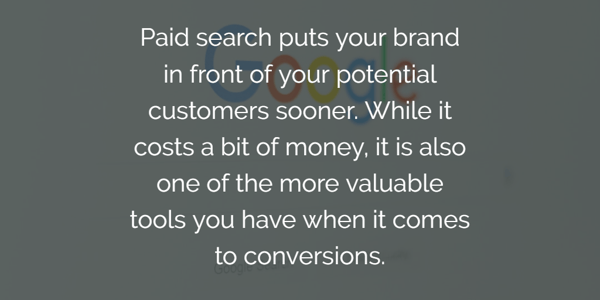
Retention Stage
In this stage, there’s a consistent customer experience. Your goal is to create a sense of intimacy with your customer. This involves building a strong customer experience, reaching out to them, following up with them after their purchase, and using information to build a better relationship with them.
In this stage, you’ll have a number of tools to use including:
Email Marketing
Once you have the customer’s email, it’s important to reach out to those individuals (with proper subscriptions) and provide them with reliable information, updates, and engagement opportunities.
Automation
Automation helps you to bring back your customers again by consistently using email marketing and social media. Because it’s automated, you’re able to connect more effectively at any time.
By being consistent like this, you’ll build that prospect up, nurture them, and encourage them to come back.
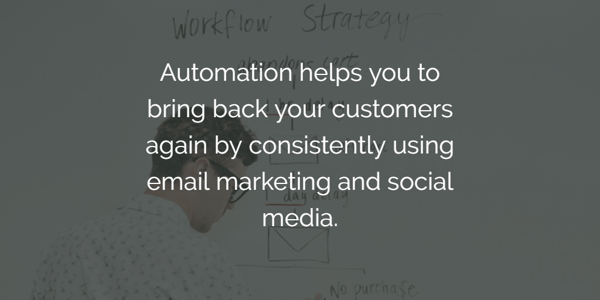
Analytics
Analytics is not nearly as overwhelming as it can seem, and it is well worth your investment. Analytics gives you information about the customer’s journey. It provides you with insight into things like when they visited, when they decided to buy from you, and how they found your brand in the first place.
It helps you to continue to build your marketing channels and your sales funnel.
Digital Marketing Functions
Marketing functions are the tasks and processes your marketing team takes to promote your products and brand. How does your product or service stand out from your competitors?
The functions of the marketing team should help to communicate this, and other messages, to your audience.
Strategy and Planning Function
Here, the team sets time-bound actions that lead to achieving the marketing objective. The team works with the product and business team to better align goals.
This is also an opportunity to share insight into the best direction to further develop or add value to your product or service with the goal of bringing the customers’ needs to the discussion.
This is also where the team will develop objectives, assess costs, and create a digital marketing strategy to achieve the objectives of the company.
Within this function, the team works to:
- Set SMART goals
- Determine the business’ needs
- Research the audience
- Develop a digital channel strategy
- Build a content strategy
- Create a media strategy
- Create a marketing methodology
- Build a digital project plan
In each component, there needs to be a clear outline of the deliverables, the tasks necessary, and the resources available.
Awareness Function
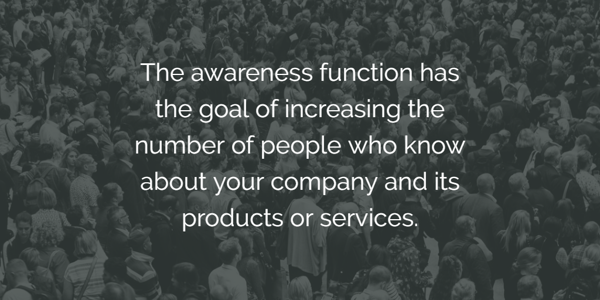
The awareness function has the goal of increasing the number of people who know about your company and its products or services.
Here, the goal is to create relevancy – why your company or product is beneficial to your customer.
As a startup, the awareness stage is where consumers first get an insight into your company. In an established company, the goal is to create more understanding of the brand.
Within this function, the team works to:
- Identify the marketing opportunities present
- Develop creative concepts to showcase those opportunities
- Develop a media strategy
- Build content
- Begin to leverage public relations, influence, and branding formats
Consideration Function
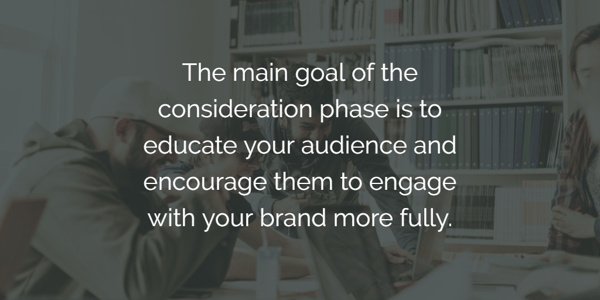
Now that you have the prospective customers’ attention, it’s time to build on what they think they know. Therefore, the main goal of the consideration phase is to educate your audience and encourage them to engage with your brand more fully.
Ultimately, you want them to move from being a visitor to your website to being a prospect or lead. This takes time and nurturing.
Within this function, the team must:
- Create effective calls-to-action (CTAs) that connect potential customers with you
- Develop landing pages with outstanding information
- Build forms that help to provide access to valuable content through gated or pillar page content
- Leverage paid search to target very specific potential customers
Conversion Function
At this point, the goal is to turn your website visitor into more than a prospect. He or she now needs to become a customer.
The functions here are more tactical and less creative as it becomes essential to make the purchase process as easy as possible for the lead.
Within this function, the team works to:
- Develop offers and messages to move your lead closer
- Test and adjust content to turn your lead into a buyer
- Leverage paid search, again to bring your ideal buyer into the page
- Retarget, or bring a lead back into the fold if he or she moved away
- Email to encourage the sale
Retention Function
Your lead makes a purchase. Yay! Within this function, then, the goal is to nurture your customers to increase their loyalty to your brand.
It’s not a hard sell here. Rather, it’s about providing something extra and building experiences. Give them a reason to come back through a promotion or extra material.
This value-added approach is designed to encourage your customer to come back to your company on their own terms. You want your customer to have a loyalty or an interest in your brand.
In this function, the team will:
- Work to continue to understand the buyers’ needs and expectations
- Develop a nurturing strategy
- Work to exceed the expectations of the customer
- Provide some type of additional value through content or experience
- Monitor ongoing post-sale activity
Analysis & Optimization Function
Every step thus far has created information and data. That is an incredibly valuable tool for you. The function here is designed to gather data to help find insights that can help to improve the current plan or to boost the success of future digital marketing strategies.
Here, we look at the strategies and any successes it brought and how this impacts your business as a whole.
Did it reach the objectives? If not, why not?
Within this function, the team works to:
- Gather all performance data about the digital marketing campaign
- Analyze both the successes and failures
- Pause underperforming campaigns to assess them more fully
- Reproduce any success that occurs
- Adapt the strategy of the marketing to achieve more
Summary
Digital marketing’s impact on your business is incredible. It’s what helps you to develop goals and objectives and to reach them by engaging with your audience where they are and how they need to be brought into the business.
Yet, digital marketers must stay current on not just the details here, but also on the fast-paced changes that continue to propel digital media forward.
There’s little doubt this is the marketing of today and the future, but it is growing and changing rapidly.
It’s also important for digital marketers to have proper digital marketing knowledge and training.
This is one of the most valuable components to creating increased results in an ever-changing and complex digital ecosystem. Without this insight, it’s impossible for your company to remain competitive.
The value of digital marketing goes further. Not only does the digital marketer working within your business need to have exceptional skills, but all business owners and executives should also understand digital marketing fundamentals. This insight into digital marketing provides you with the opportunity to develop and achieve business goals and objectives.
Want to test your digital marketing skills? Take this quick 12-question assessment to see how your digital marketing skills compare to others in your industry.







